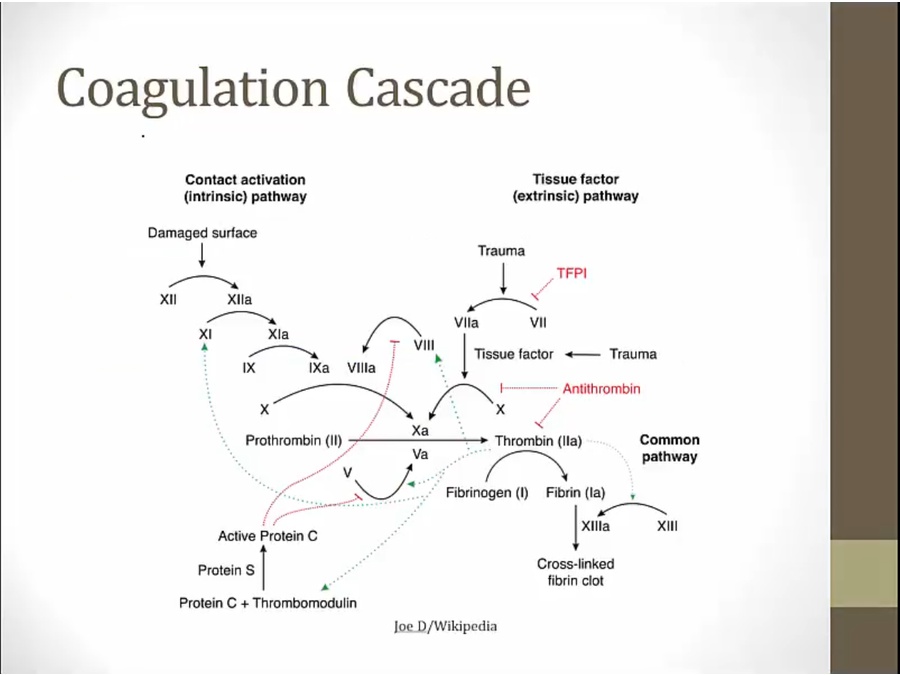coagulation cascade
- related: Hematology, anticoagulation agents cascade and overview
- tags: #hemeonc
Coagulation
- Coagulation happens with
- endothelin release from site of damage leading to vasoconstriction
- endothelial damage leads to platelet activation leading to thrombus
- endothelial damage leads to coagulation factor activation. Fibrin is formed leading to thrombus
Cascade

Coagulation cascade has in theory intrinsic and extrinsic pathways. Both pathways converge at conversion of factor X to factor Xa. Factor Xa facilitates conversion of Prothrombin (II) to Thrombin (IIa) that in turn converts Fibrinogen (I) to Fibrin (Ia).
Classically, extrinsic pathway starts with endothelial damage leading to exposure of tissue factor that activates factor X. Intrinsic pathway starts from activation of Factor 12 and also includes Factor 8, 9, 11. Intrinsic pathway leads to PTT elevation. Extrinsic pathway leads to PT elevation.